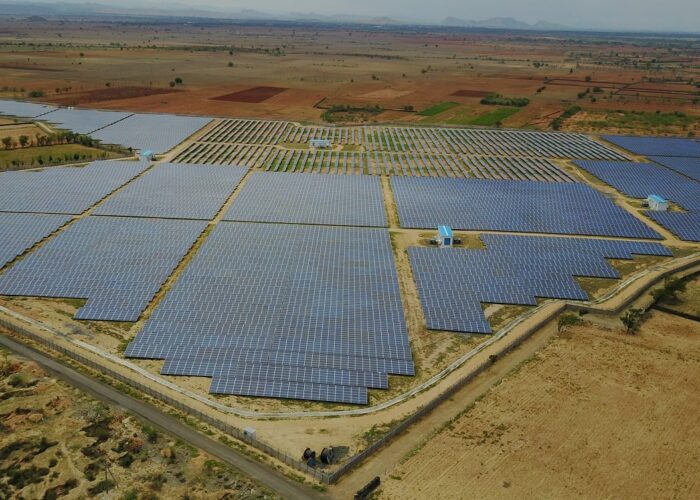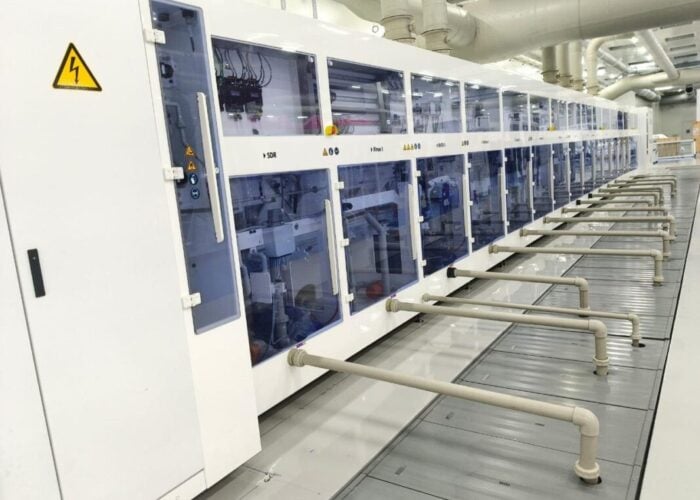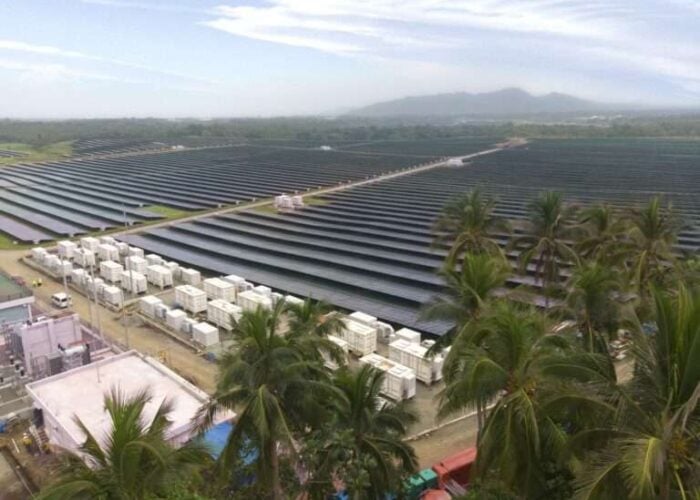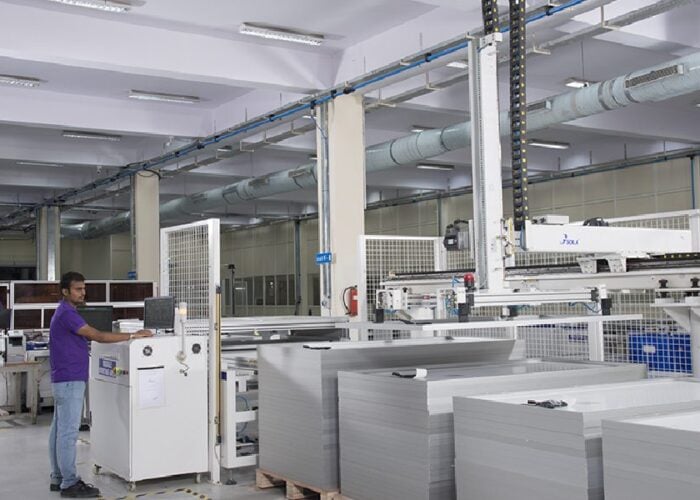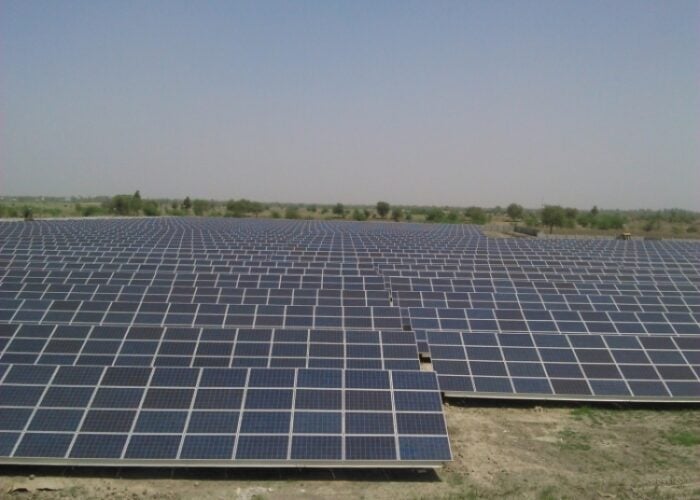
Indian solar tariffs have matched their lowest ever in the most recent 2GW and 3GW auctions for Interstate Transmission System (ISTS)-connected projects, hitting INR2.44/kWh (US$0.036) for the first time since May 2017. Prima facie, this might seem to be churlish, but it is certainly emblematic of some refined sensibility of the Indian solar and financial markets.
Is there a way to decipher such a bafflingly low tariff? Absolutely yes; in fact, there is a very rudimentary method to unearthing this mystery – it is called levelized cost of energy or LCOE, in short.
Unlock unlimited access for 12 whole months of distinctive global analysis
Photovoltaics International is now included.
- Regular insight and analysis of the industry’s biggest developments
- In-depth interviews with the industry’s leading figures
- Unlimited digital access to the PV Tech Power journal catalogue
- Unlimited digital access to the Photovoltaics International journal catalogue
- Access to more than 1,000 technical papers
- Discounts on Solar Media’s portfolio of events, in-person and virtual
LCOE is similar to the concept of the payback, but instead of measuring how much cash flow is needed to recoup the initial investment, it determines how much money must be made per unit of electricity. A simple way to look at LCOE is that it is a measure of the cost of electrical energy that you generate.
Structurally, LCOE includes the initial capital investment, operation costs, energy generation and a discount rate, which is used to calculate a present value of the total cost of building and operating a power plant over an assumed lifetime for each unit of electricity generated. In sum, there are four parameters that need to be worked upon to derive LCOE of an energy project:
- Initial investment
- Operation and maintenance costs
- Estimated generation
- Discount rate
Before delving deeper into these parameters, it is important to understand that every investor has different return expectations on his investment. Particularly in India, the investors demand an equity internal-rate-of-return (IRR) in the range of 14-18%, which can be assumed to be the cost of equity. Then again, our experience of over 2GW as Independent Lender’s Engineer (LIE) shows that large IPPs can raise debts with an interest rate less than 10%, typically around 9.75% for a term of 12 years. Keeping in mind that sun is a stable source of fuel (sunlight) in case of solar projects, we can safely assume the lower end of the range for the cost of equity as 14%. Considering a tax rate of 30% and a normative debt equity ratio of 70:30, the weighted average cost of capital (WACC) turns out to be around less than 9% (8.77% to be precise).
As a simple rule of project economics, one can invest in a project if it yields a return over and above this. Keeping this in mind, we need to hit an LCOE of 2.23/kWh (in relation to the L1 tariff of 2.44/kWh) for the solar project to be worth investing.
Let us sink our teeth deeper into the other parameters to ascertain whether the target LCOE can be crossed as things stand today.
Initial investment: A year back a tariff of 2.44/kWh certainly looked like a balderdash prediction of the future at best; however, things seemed to have turned for the better recently, thanks to the policy shifts in China. Importantly, this recent clampdown by the Chinese government on its solar PV programme is set to cause an impending surfeit of Chinese PV production capacity. This reduced policy support for PV deployment in China will hammer down the multicrystalline solar module prices in China to around US$0.24/watt by the end of this year, predicts Bloomberg New Energy Finance (BNEF). Considering the ongoing US$/INR exchange rate of INR 69 per US$, the price of modules translates into INR 16.56 per watt peak. The balance of system (BoS) pricing for big ticket projects can be easily achieved at INR 12 per watt peak, which takes the project cost to INR 28.6 per watt peak.
Operation and maintenance costs: Our experience of managing O&M for around 2GW solar assets says that big ticket projects can be operated and maintained with a spotless quality for price of around INR 350,000/MWp.
Estimated generation: Our analysis shows that in place like Rajasthan, which receives the best radiation in India, we can clock a specific generation of 1,750 kWh/kWp/year with tier 1 modules, best inverters in the industry, a DC overloading of 25% and seasonal tilt project configuration. This translates into AC and DC capacity utilisation factors (CUF) of 25% and 20%, respectively.
Discount rate: We can consider WACC as the discount rate for estimating the present value of the project’s construction and operational costs.
Plugging these numbers in our simple LCOE calculation excel sheet yields a magic number of INR 2.15/kWh, which is well below our targeted figure of 2.23/kWh. While this is the cost of generating each unit of electricity over a period of 25 years, the L1 tariff of 2.44 has a profit margin of INR 0.29 per unit of electricity in comparison to 2.15/kWh, which is equivalent to some 13.7%. While running sensitivity analysis for a 5% deviation in these parameters, it turns out that the profit margin goes below the WACC only in the case of a dip in the energy generation (8.48%). On the other hand, it remains healthily over the WACC in case of increase in initial investment (9.38%), O&M costs (13.08%), interest rate (11.02%).
It is unlikely that a well-engineered, properly constructed and maintained project will throw deviations to the tune of 5%, pushing us to a shocking conclusion that sub-3 tariffs are indeed a possibility, provided everything goes as per plan.
But only time will tell as to who will get the better of whom – a refined sensibility or churlish audacity?
Article updated: O&M for big projects at price of around INR 350,000/MWp.

